

FROM THE EDITOR
Change is the only constant. This phrase rings particularly true for aged care, a sector undergoing rapid and radical changes with technology as one of the key driving forces.
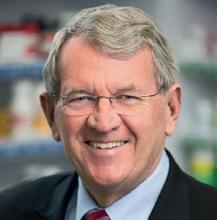

Whether it is for medication management, providing care and assistance amid staff crises or as robot companions, a wide range of technology tools and solutions is improving the health and wellbeing of older people.
Market research firm Custom Market Insights predicts the global disabled and elderly assistive technology market, valued at US$46.11bn in 2021, to reach US$66.84 billion by the end of 2030 at a compound annual growth rate (CAGR) of approximately 6.7% during the forecast period 2022–2030.
Julianne Parkinson, founding CEO of the Global Centre for Modern Ageing, believes technology, including artificial intelligence (AI) and machine learning (ML), will shape the future aged health landscape and is enabling new data-driven models of care in Australia, but she warns that this technology must be usable, scalable and genuinely fit for purpose for both older adults and care providers. Read the article on page 12 for Parkinson’s thoughts and insights on key challenges facing the aged care industry and how we can help older Australians age well.
This issue’s lead article, by health and aged care lawyer Samantha Pillay from Barry Nilsson, details the legislative landscape that governs home-based care.


Staffing issues continue to plague providers in Australia, as well as globally. The latest aged care pay rise and labour agreement will provide some respite to local providers, but Graeme Prior — Deputy Chair of Aged Care Workforce Industry Council, President of the International Federation on Ageing and the CEO of Hall & Prior Aged Care — warns there is no silver bullet to this challenge. Read more about this on page 25.
Other topics covered in the issue include: electronic charting revolution, mental wellbeing of older Australians, quality reporting, falls prevention, wound management and more.
Happy reading!
CONTRIBUTORS
Mansi Gandhi Editor ah@wfmedia.com.au
MAY 2023 - AGED HEALTH 3 www.agedhealth.com.au
Graeme Prior CEO of Hall & Prior Aged Care Deputy Chair of Aged Care Workforce Industry Council, and President of the International Federation on Ageing
Gerard Stevens AM Managing Director Webstercare
Samantha Pillay Insurance and Health Law Principal Barry Nilsson

4 AGED HEALTH - MAY 2023 www.agedhealth.com.au CONTENTS 6 Mitigating the legal risks of delivering care in the home 12 Lessons in modern ageing 18 An electronic charting revolution in aged care 22 Preventing falls with sensor technology 25 No silver bullet to staff crisis 30 Contactless screening tool for hard-to-heal wounds 36 The incontinence taboo 38 Trial to improve quality reporting 42 The power of pets Regulars 28 Design Matters — Making the small big 40 A Day in the Life of... Charnel Sandy-Hayes — a passion for compassion SUBSCRIBE FOR FREE NEWSLETTERS MAGAZINE agedhealth.com.au/subscribe cover image: iStock.com/demaerre iStock.com/izusek



MITIGATING THE LEGAL RISKS OF

6 AGED HEALTH - MAY 2023 www.agedhealth.com.au
iStockphoto.com/Halfpoint
DELIVERING CARE IN THE HOME
An increasing number of Australians, particularly the elderly, are choosing to receive health and medical care in the family home. SAMANTHA PILLAY from Barry Nilsson Lawyers, details the legislative landscape that governs home-based care.

COVID-19 supercharged a global trend towards home-based health care and the adoption of digital health services. A study by global consulting firm McKinsey found up to $265 billion worth of care or 25% of the total cost of care in the United States could shift to the home by 2025 — a three- to fourfold increase on the current at-home spend.
While research has shown in-home health care can result in equivalent or better outcomes for patients, robust governance frameworks are required to mitigate the increased legal risks — for health providers and nursing and allied health practitioners — associated with providing highly regulated health care services in often uncontrolled and unpredictable settings.
Currently, in-home health care services in Australia are primarily delivered through the aged care system, National Disability Insurance Scheme (NDIS) and state-based hospital-in-the home programs.
Providers that deliver in-home nursing and care services are often limited in their access to resources, equipment, supervision and control over the environment in which their staff operate compared with providers of services in hospitals, residential aged care facilities or medical practices.
MAY 2023 - AGED HEALTH 7 www.agedhealth.com.au
>>
This can give rise to regulatory and legal risks for providers as well health professionals — particularly nursing staff (registered and enrolled nurses) and allied health workers — who must operate within the bounds of their individual professional scopes of practice.
AGED CARE
The Aged Care Act 1997 imposes various requirements on approved providers relevant to clinical governance. The Quality of Care Principles set out responsibilities of approved providers including the requirement to comply with the Aged Care Quality Standards. A new Code of Conduct for Aged Care — which describes the standards expected of aged care providers, their governing persons and aged care workers — was introduced in December 2022.
This framework provides processes for assessment of compliance and sanctions by the Aged Care Quality and Safety Commission and the Secretary of the Department of Health for non-compliance such as revoking, suspending or restricting a provider’s approval to operate.
Key obligations on aged care providers include:
• maintaining a competent workforce, including by delivering ongoing training and undertaking regular performance assessments;
• meeting workplace health and safety obligations to staff by identifying and reducing potential hazards;
• undertaking ongoing assessment and care planning of patients;
• training staff to recognise a change or deterioration in a patient’s medical status or their capacity to provide valid consent, and having appropriate processes in place to escalate these concerns to an appropriate health practitioner for assessment and treatment;
• medication management which is governed by state and territory Medicines and Poisons legislation;
• having an effective incident management system in place, including reporting serious incidents to the Commission — a new obligation from December 2022.
The federal government is currently developing a new program for in-home aged care in response to recommendations by the Royal Commission into Aged Care Quality and Safety.

Significant industry and community consultation has already taken place on the design of the new program, which is due to commence from 1 July 2024. This will result in changes that will impact providers and health practitioners operating in this area.
NATIONAL DISABILITY AND INSURANCE SCHEME (NDIS)
The NDIS Act 2013 imposes a range of requirements on providers and employees who deliver support services. The NDIS Code of Conduct sets out expectations for the conduct of both registered and unregistered providers and workers. The NDIS Practice Standards specify the service quality standards to be met by registered NDIS providers.
Compliance is regulated by the NDIS Commission, which has the power to undertake regular audits and investigations which can result in actions against providers such as deregistration and civil penalties. Key obligations on NDIS providers include:
• ensuring workers have the necessary training, competence and qualifications for their role;
• imposing particular competency obligations on staff who perform higher risk ‘high intensity daily personal activities’ such as complex bowel care, ventilator support, tracheostomy support, complex wound care, and epilepsy and seizure support.
8 AGED HEALTH - MAY 2023 www.agedhealth.com.au
THE MOST SIGNIFICANT SCOPE OF PRACTICE CHALLENGES FOR IN-HOME CARE PROVIDERS

OBLIGATIONS ON INDIVIDUAL PRACTITIONERS
Individual health care practitioners are responsible for understanding and working within the bounds of their professional scopes of practice.
Nurses are subject to greater regulation than unregistered care workers. The most significant scope of practice challenges for in-home care providers and workers arise in areas that require registered nurse involvement or supervision, such as medication administration and patient assessment and care planning.
The practical difficulties of meeting supervision requirements across a geographically dispersed nation with a nursing shortage are in part reflected in the nursing professional framework. The Nursing and Midwifery Board of Australia (NMBA) describes its framework as ‘broad and principle based’ so that it is sufficiently flexible to apply in a range of different settings.
Registered nurse and enrolled nurse supervision can in many instances be ‘indirect’, including remote, subject to the circumstances and questions of competence and risk. Telehealth may provide some assistance with these challenges, particularly in remote locations, provided that safety and quality can be maintained.
As in-home health care grows, it is incumbent on individual practitioners to understand their responsibilities and obligations under relevant professional practice, registration and code of conduct requirements and to keep up to date with changes. Not knowing exposes nursing, care and allied health staff to unnecessary legal risks. n
*Samantha Pillay, Insurance and Health Law
Principal, Barry Nilsson. Pillay specialises in a wide range of health law matters including clinical governance, regulatory requirements, medical malpractice, professional indemnity, patient capacity and consent, vaccination and public health matters. Her expertise is regularly sought by clients including public and private hospitals, medical and allied health practitioners, medical transport and retrieval services, home care, aged care and disability support providers, medical centres, diagnostic service providers and their insurers and brokers.

MAY 2023 - AGED HEALTH 9 www.agedhealth.com.au
AND WORKERS ARISE IN AREAS THAT REQUIRE REGISTERED NURSE INVOLVEMENT OR SUPERVISION, SUCH AS MEDICATION ADMINISTRATION AND PATIENT ASSESSMENT AND CARE PLANNING.
iStock.com/Anchiy
INTRODUCING A NEW MEAL SOLUTION FOR YOUR KITCHEN


We know mealtimes are an important part of the day for your patients or residents. We also understand that times are challenging for back of house kitchens with increased food costs and shortage of supply and/or labour, particularly in regional or remote areas. Through our market research across Australia, we have ascertained that many catering facilities need assistance to ensure continuous supply of high-quality meals and are actively looking for meal solutions that can save them both time and money.
Meal Solutions for your kitchen
Introducing the new range of The Good Meal Co Chef’s Selection 2kg Bulk Bags designed to support the chef, cooks and kitchen hands in your kitchen with solutions that are time saving, taste great and ensure consistency of supply. The meals are cooked fresh with majority of ingredients sourced locally where possible. The new array of great-tasting meals from The Good Meal Co are produced at our manufacturing site in Emu Plains, Sydney and packed fresh for frozen distribution all around Australia. The wide variety of meals come ready
to Heat & Serve and are a viable and nutritious alternative to cooking from scratch. Additional benefit of sourcing from our production facility is continuous supply of high-quality consistent meals and overall economies of scale.

Avoiding menu fatigue
One thing we have learnt from our consumer research is that menu fatigue is a real thing. Residents, patients and consumers like to try different tastes and fl avours, and of course many have different cultural or dietary needs. Our initial pilot launched in March 2023 involved ten meals and due to its overwhelming success, we are pleased to advise that by June 2023 there will be an extensive range of more than twenty five different meals or sides available. The total menu range includes a large variety including ever popular favourites such as Butter Chicken and Beef Bourguignon. Or more traditional offerings such as Bolognese sauce and Shepherd’s Pie as well as vegetarian options such as Vegie Risotto or Lentil & Vegetable Cottage Pie, all of which can be accompanied by sides such as Rice, Potato Mash or Mixed Vegetables.
Arrive ready to Heat & Serve
SPC Care are pleased to launch our new Chef’s Selection range of 2kg Bulk Ready Meals under The Good Meal Co brand. All of the meals are prepared at our site in Emu Plains, western Sydney (on the edge of the Blue Mountains) and distributed frozen to lock in the goodness and arrive ready to Heat to Serve. There are approximately 13 serves per bag and 6 bags per carton for majority of the skus. Initially the target sector is HealthCare, Defence, Education and Catering.

Contact us today for a free sample
With a sales team in each state the SPC Care team are on the ground now and sharing details of the new bulk bags product launch across Australia. Contact us today for further information or to receive a free sample: www. spccare.com.au or email: spccare@spc.com.au.
10 AGED HEALTH - MAY 2023 www.agedhealth.com.au SPONSORED CONTENT SPC spccare.com



costs and
of staff. Our new Chef’s Selection meal solutions offers you:
of labour
We know how important meal times are for your patients and/or residents. We understand times are challenging with increased
shortage
Efficiency
Assurance
Procurement economies of scale Quality
The Good Meal Co is part of SPC Care, the newly formed HealthCare division of SPC. Please contact us for further information on 1800 155 255 or visit our websites. goodmeal.com.au | spccare.com.au Introducing our new Chef’s Selection Range of Bulk Ready Meals
Consistency & continuity of industrial scale production
LESSONS IN MODERN AGEING
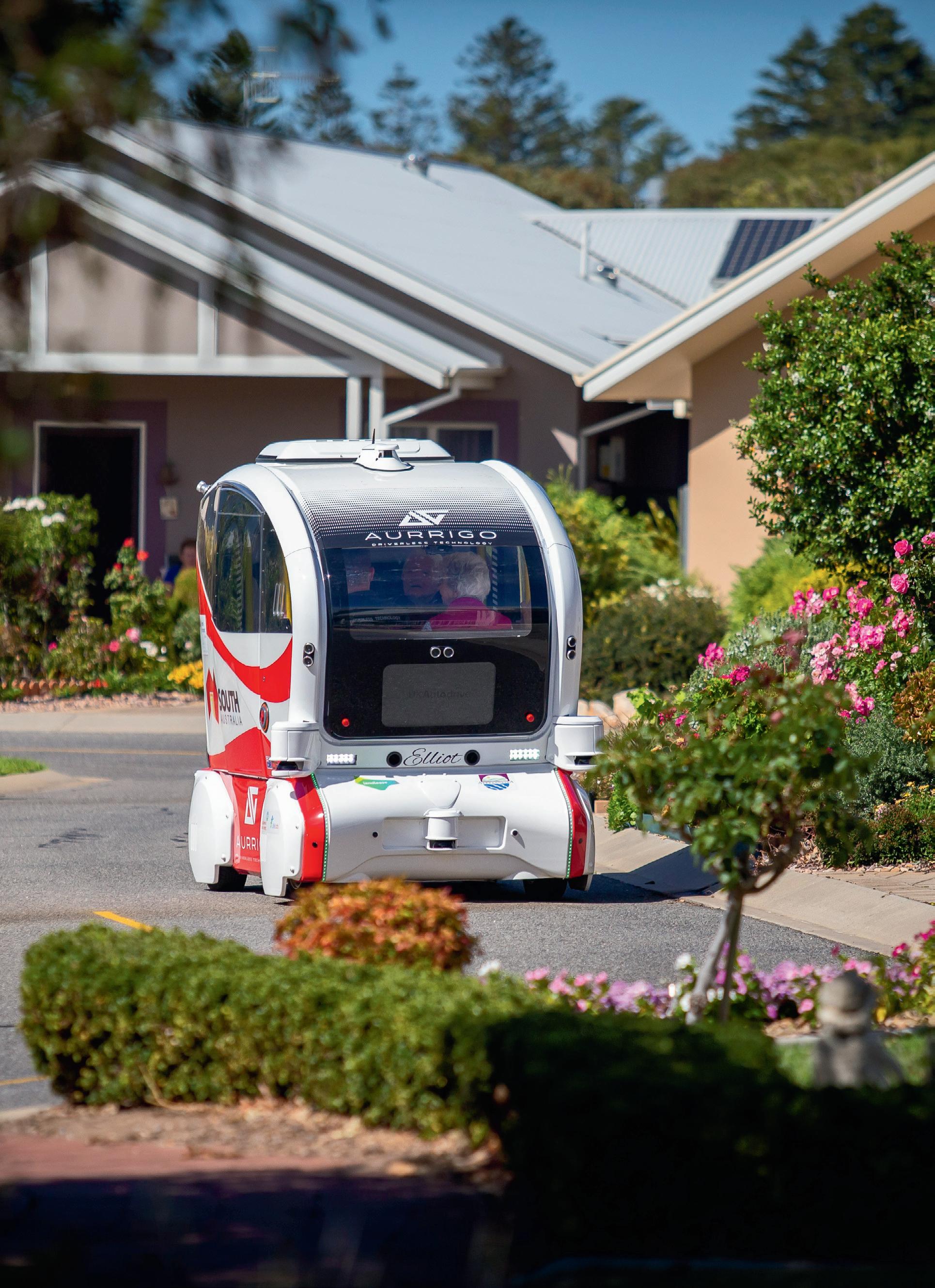
12 AGED HEALTH - MAY 2023 www.agedhealth.com.au
Image: Supplied
One of the most important factors in developing outstanding aged care is fostering a culture of understanding and empathy in which we listen to the voices of older Australians, suggests Julianne Parkinson.

Parkinson argues that some of the greatest challenges facing the aged care industry in Australia today are ageist attitudes and limiting beliefs which present a significant obstacle to improving the quality of care for older adults.
“At a societal level, we can embrace the concept of modern ageing through the recognition that older adults deserve our deepest respect, and have much to contribute, whether through employment, learning, enterprise, leadership or community. It’s all about carving out new pathways and co-designing new, appealing choices for older adults that reflect their individualism and agency,” Parkinson says.
In her work with the not-for-profit GCMA based in South Australia, Parkinson leads the collaboration with partners across the globe to champion initiatives to improve the lives of our older generations. The GCMA works with governments, businesses, citizens and research partners on public benefit research projects to inform decision-making in policy, product and technology design as well as bespoke research projects. These programs utilise internationally accredited living laboratory methodologies and GCMA’s state-of-the-art simulated studio, LifeLab.
“It’s always inspiring to see new technologies, and new thinking, applied to solve the challenges or unmet needs of older people.
“We’re especially proud of our project with autonomous vehicle manufacturer Aurrigo, investigating the potential of self-driving vehicles within retirement village settings, and also our work with regional provider Barossa Village to design a vibrant intergenerational precinct that expands care provision beyond the physical structure of an aged care facility.”
Parkinson emphasises the need to remain socially engaged with the wider community and for Australians to maintain a sense of purpose as they age. “Keeping older people engaged in civic life, and connected to their communities, enriches both individuals and our country as a whole.
“Fostering a culture of respect and empathy for older adults is perhaps the most important lesson that Australia can learn from other nations.”
Singapore is often named among the nations with the strongest supports for healthy, positive ageing, and Parkinson highlights Singapore’s strong emphasis on innovation and leveraging technology to support ageing citizens.
Technology, including Artificial Intelligence (AI) and Machine Learning (ML), will shape the future aged health landscape and is enabling new data-driven models of care in Australia, but Parkinson cautions that this technology must be usable, scalable and genuinely fit-for-purpose for both
MAY 2023 - AGED HEALTH 13 www.agedhealth.com.au
CHARLOTTE NEWTON
>>
Aurrigo autonomous vehicles.
JULIANNE PARKINSON, founding CEO of the Global Centre for Modern Ageing, shares her insights on the key challenges facing the industry and how Australians can age well.
older adults and care providers. When developed and implemented correctly, technology has exciting potential to improve client outcomes and could also alleviate the burden of repetitive, low-value tasks to improve the working lives of aged health employees.
Emerging technologies are also being implemented to meet the needs of the Baby Boomer generation, which is beginning to enter aged care environments.
“They have different expectations, and more specific demands for their own personalised care, than previous generations. We’re beginning to see care providers broadening their offerings in response to this trend, integrating preventative care and wellness initiatives.”
Approximately 95% of older Australians aged 65-plus are living independently in their own homes. According to a Global Centre for Modern Ageing study, eight in 10 older Australians aspire to remain in their own homes for as long as possible.
“This desire to stay at home, even as circumstances change, actually increases with age. Home is intrinsically linked to our sense of identity and belonging. Ageing in place is important to older people because it allows them to maintain their independence, stay connected to their communities, and enjoy the safe haven of comfortable, familiar surroundings.”
Parkinson also stresses the benefits of ageing in place at a macro-economic level since it’s more cost-effective than other forms of aged care.
“We should be modifying and designing homes, services and community infrastructure so that they’re truly accessible and ‘age inclusive’. Ideally, solutions should support older people to transition smoothly from independent to assisted living, onwards to skilled nursing facilities or dementia care settings as or when they’re required.
“We can build sturdy foundations for ageing in place through multi-stakeholder collaboration; co-designing fit-for-purpose solutions that effectively address the unmet needs of our culturally, geographically and socio-economically diverse older population.”
The GCMA envisions that innovative, blended models of care incorporating new technologies, eg, remote support and monitoring for older Australians, will increasingly enable independent living.


“But it’s crucial that older end users feel empowered and not alienated or overwhelmed by these technologies. For this reason, investment in digital inclusion and literacy programs tailored to older adults is essential.
“Investment in prevention initiatives, early intervention programs and appropriate, fit-for-purpose technologies will also stand our nation in good stead for the future, improving the efficiency and efficacy of healthcare and wellbeing services.
“We’re waking up to an important realisation that becoming ‘old’ is not something that happens overnight. It’s a long and graceful process.” And one we all need to respect. n
14 AGED HEALTH - MAY 2023 www.agedhealth.com.au
FOSTERING A CULTURE OF RESPECT AND EMPATHY FOR OLDER ADULTS IS PERHAPS THE MOST IMPORTANT LESSON THAT AUSTRALIA CAN LEARN FROM OTHER NATIONS. – JULIANNE PARKINSON
The LifeLab simulated real-life studio. Image: Supplied
Julianne Parkinson outside LifeLab, GCMA. Image: Supplied
Breathe easy
Caire provides everything you need for your oxygen therapy, from oxygen concentrators to accessories, we are dedicated to helping you breathe easy.

Freestyle Comfort
Expand your comfort zone with this innovative and powerful design:
• Compact and Lightweight
• Lasts all day
• Ergonomically Designed
• Quiet
Combining portability with clinical efficiencygiving you the freedom to travel and enjoy life on the go:
Compact and transportable
Extended Battery Life
• Quiet
• 24/7 Use
NewLife Intensity 10
Stationary oxygen concentrator that’s durable with a high continuous flow:
• Higher flow options for patients in hospitals or long-term care facilities
Dual flow option allowing two patients to use simultaneously Easy to service and maintain
A power efficient stationary oxygen concentrator is the must have for your home oxygen delivery needs:

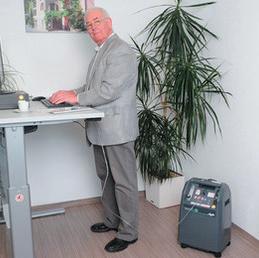


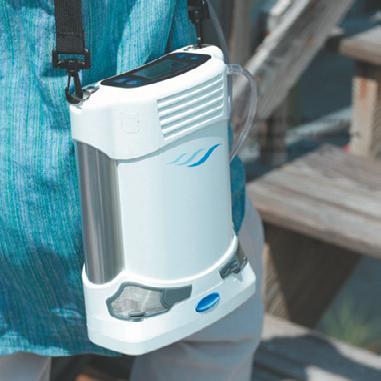
• Lightweight and easily transportable
• Low failure rate with no preventative maintenance schedule
Lockable flow meter
caireaustralia.com.au
 Eclipse 5
AirSep VisionAire 5
Eclipse 5
AirSep VisionAire 5
SAFEGUARDING MENTAL HEALTH
Following the release of a research report on mental health of older Australians, industry body COTA is calling for a national strategy and improved literacy and education around evidence-based coping strategies. COTA CEO PATRICIA SPARROW and Engagement Lead MARIA KATSABANIS explain why.

The COVID-19 pandemic and lockdowns had profound impacts on the mental health and wellbeing of people aged 75 and over.
To better understand how people aged 75 and over managed during the pandemic and lockdowns, and to what extent, if at all, their mental health and wellbeing were affected, in October 2021 we surveyed over 1100 older Australians. We wanted to hear directly from older people, so we conducted in-depth interviews and focus groups, and received written submissions.
WHAT DID WE FIND?
Older people experienced loneliness, fear, loss of social connections, loss of sleep and appetite, worsening mental health and reduced physical activity, leading to cognitive decline. Even people who reported their mental health was not affected reported some symptoms, to varying degrees.
One-third of older Australians reported their mental health was adversely affected by the pandemic and lockdown measures. Of these: 88% did not receive support from a mental health professional or mental health service; 30% felt more isolated when services moved online; 62% relied on a community or health services visitor to check on them during lockdowns; 20% had no one to talk to during periods of lockdowns; 61% noticed mood changes; 61% became less physically active; 8% could not get the help they needed (compared to less than 1% of those whose mental health stayed the same).
These impacts were not experienced equally. Our research shows that older women, those with caring responsibilities, older people living with disability, older people from CALD communities, people in residential aged care, people living with dementia — were particularly vulnerable to mental distress.
Older Australians, even those who considered themselves unaffected by the pandemic, described themselves as living with ‘worry’ and ‘stress’; of experiencing sadness, loss, lack of sleep and appetite; of distress; but rarely ‘depression’ or ‘anxiety’, for example. This points to the stigma associated with mental illness and seeking support for mental ill health as a barrier to receiving support. Older Australians emphasised resilience and ‘getting on with it’; yet this minimisation, along with the lack of appropriate mental health services, has devastating mental health impacts on older Australians.
WHAT MAKES A DIFFERENCE TO OLDER AUSTRALIANS?
There is a need to ensure that the strategies that people aged 75 and over asked for — strong social connections, the right information, access to social support and services, age-informed mental health expertise and engagements with community-based organisations — are in place, adequately funded and accessible to all.
16 AGED HEALTH - MAY 2023 www.agedhealth.com.au
iStockphoto.com/SeventyFour
We also need to reiterate the right of older people to adequate and appropriate mental health services, and that this should inform any crisis response.
Mental health care needs to be culturally informed, safe, responsive and appropriate, particularly for groups where the concept of mental health is an unfamiliar one. Most older people reported that they were unaware of services for mental health and services for older people experiencing distress during the pandemic.
Our findings reinforce the need for culturally safe models of mental health education and support, integrated into existing service provision.
People need help — they need to know who they can talk to but will not ask for it in public. If you build trust, then they will talk about anything. Older people need to be comfortable and feel confident, not confronted. The language of mental health does not work, and diagnostic labels do not translate easily, and may have no cultural or language equivalent. They will hide mental health issues to avoid family conflict and make them feel more comfortable.
The long-term mental health impacts of the pandemic are undetermined. COTA Australia’s research suggests that to mitigate these and prevent long-term mental ill health, improved mental health literacy and education around evidence-based coping strategies and resilience building are urgently needed.
ACTION REQUIRED
• There is a need for a National Older Persons Mental health strategy with targets and indicators, and that is properly resourced, monitored and evaluated.
• Prioritise a trained, professional aged care workforce. We need care staff to be trained in first aid mental health — to at least be aware of the signs of distress in older people they work with, and to know where and how to refer people. In our research, the understanding of mental health varied from facility to facility, provider to provider and staff member to staff member. A focus on crisis management seemed to override other issues. Staff providing care and service providers to older people need training and education in mental health awareness.
• Promote and normalise mental health services and language among older people.

If we are serious about older people’s mental health and wellbeing, not only in times of national crisis, we need to make it a health priority. We need to prioritise the importance of preventative work with the mental health of older people. The full mental health impacts of lockdowns are still unfolding. All older Australians have the right to an adequate standard of health care, and this includes mental health care and services. This is not an optional luxury for times of economic affluence but a fundamental right and social necessity.
This research captured the lived experience of Australians aged 75 and over during the COVID-19 pandemic. It amplified the voices of a group of Australians whose specific mental health and wellbeing needs are often dismissed. Our sample of older Australians, while one of convenience, showed that the mental health impacts of the pandemic and lockdowns were profound for this cohort, may be long term and require targeted responses and initiatives. COTA Australia will also continue to advocate for appropriate, accessible and comprehensive mental health services that meet the needs of older Australians. n
SIMPLER – ONE STEP CLEAN AND DISINFECT
A cleaner disinfectant reducing the need for multiple products.
SMARTER – SUPERIOR EFFICACY
Killing up to 99.9999% of pathogens including bacteria, viruses, mould, fungi, yeast, TB and Spores.
FAST KILL TIMES WITH NO WET CONTACT TIME REQUIRED
Begins to work from 30 seconds and keeps on working to achieve all kill times even when dry.
SAFER – MATERIAL COMPATIBILITY
Tested and proven compatible with a vast range of surfaces with no heavy detergent residues.

RESIDUAL AND BIOSTATIC CAPABILITIES
With 24-hour residual on touched surfaces for bacteria, COVID-19, and yeast and a further 72-hour biostatic effectiveness on bacteria and COVID-19.
S-7XTRA IS AVAILABLE IN UNSCENTED AND NEW S-7XTRA FRESH – GINGER & GREEN TEA
MAY 2023 - AGED HEALTH 17 www.agedhealth.com.au Pty Ltd More Healthcare facilities, Aged Care and Patient Transport are choosing S-7XTRA We invite you to request more information and receive your FREE sample. PROUDLY MADE IN AUSTRALIA 1300 936 044 | info@anaeron.com.au | www.anaeron.com.au ARTG 232011 ARTG 232014
GERARD STEVENS AM*
Increased use of electronic medication charts in aged care facilities could transform outcomes for the elderly, improving prescribing and management of medication and reducing harm.

More than 40 years ago I invented the world’s first multi-dose medication management system. 1 It was designed specifically for nursing homes, as they were called at the time, but its success in improving medication adherence and reducing misadventure saw it adopted in a range of settings.
Much has happened since that landmark development in the quality use of medicines within residential aged care facilities (RACFs). Technology has completely revolutionised their safe and effective use.
Today we can connect the entire medication care team with cloud-based, centralised medication profiles and seamless communication. All participants access one real-time ‘single source of truth’.
Clinical information can be captured, updated and reported at any time, from anywhere. Resident profiles and charts are always current and accessible, the risk of error is minimised, complex processes are simplified and less time is spent checking different sources of information.
The maxim of the right medication and the right dose, to the right patient, at the right time has never been so assured.
STANDARDISING OUTCOMES
The latest and perhaps greatest contribution to the safe and effective use of medications in Australian aged care is the adoption of the electronic National Residential Medication Chart (eNRMC) for use by RACFs.
This initiative was urged by the Royal Commission into Aged Care Quality and Safety and is now being actively encouraged by the federal government, with incentives and support offered for its adoption. Being one of the
18 AGED HEALTH - MAY 2023 www.agedhealth.com.au
>>
AN ELECTRONIC CHARTING REVOLUTION IN AGED CARE

MAY 2023 - AGED HEALTH 19 www.agedhealth.com.au
iStockphoto.com/Dobrila Vignjevic
first organisations to develop an electronic version of the NRMC when it was enacted by the Commonwealth in 2014, we are well aware about the complexities involved in developing technology and interoperability.
Essentially, the process requires transferring the manual actions of writing and recording from a way that the human brain works — which is in three dimensions — into two dimensions.
The human brain is conditioned to seek and adapt to random patterns. This leads to a variety of behavioural responses to solve any one problem. And of course, this can lead to poor judgement and human error.
When the risk of error has the potential for catastrophic outcomes, we need to develop and adopt systems that standardise responses and actions to a range of potential situations, and build in redundancies to mitigate any human errors that sneak into the system.
IMPACT ON RESIDENTS AND STAFF
Webstercare’s latest electronic system 2 has received positive feedback from doctors as well as pharmacists. The system provides mobile access to doctors and they, in turn, can send their medical orders from anywhere — even S8 medications like psychotropics are electronically prescribed. Pharmacists also love the system because it removes many sources of medication misadventure due to human error and significantly improves workflow efficiencies, especially in communicating with the RACF via the system.
But the system was developed for RACFs and it is here where the ‘rubber hits the road’. Staff report greater confidence and less stress during medication rounds. They no longer need to scan and send medication charts to the pharmacy each time a medicine is dispensed or changed. Everyone wins with more efficient and accurate workflows.
Medication orders are computer-generated, not handwritten, so there is less chance for comprehension error. Even S8s are fully paperless.
All steps in the process are prompted and captured in real time by the system. This leads to greater transparency, accountability and no intermediate manual steps or workarounds.
Medication data is gathered and analysed to improve overall governance by supporting monitoring, reporting, auditing and medication optimisation. This makes it easier to meet accreditation reporting responsibilities. RACFs will also have greater confidence that medications are being prescribed in line with best practice, regulation and policies.
So everyone in the medication cycle benefits from the eNRMC: patients have improved health outcomes, staff have less stress, facility management improves efficiencies and health professionals have greater convenience and reduced administrative burdens.
FACTORS TO CONSIDER
The market is not homogeneous and it pays to ask questions to ensure you’re not comparing apples with oranges. Before choosing your eNRMC provider, make sure of the following:
• All medicines, including S8s, can be prescribed without a paper-based prescription.
• Data access is real time, supported by the cloud, but can also operate offline in wi-fi blackspots. This is especially important in rural and remote areas.
• It is an end-to-end system that supports direct communication between the RACF, the prescriber and the pharmacist. Having to use phone, fax and standard email adds confusion and unnecessary steps to the process.
• There is flexibility in the type of medication packing systems available to meet the differing needs of consumers. There is interoperability throughout the system and its components.
• The functionality is streamlined so no need to log in and out of system components.
There are useful incentives for RACFs to make the transition. For more information, go to Electronic National Residential Medication Chart (eNRMC) transitional arrangement – Residential aged care services information pack | Australian Government Department of Health and Aged Care. n *Gerard Stevens AM is a community pharmacist and Managing Director of medication management systems company, Webstercare. Stevens' passion and commitment to research, development and better patient care, and resulting contributions were recognised in 2013 when he was appointed Member in the General Division of the Order of Australia as part of the Queen's Birthday Honours List for his “significant service to the pharmaceutical industry, and to community health”.
1. Stevens invented the multi-dose Webster-pak which is said to have revolutionised medication management and was the foundation of Webstercare. The company has since developed more than 600 products and been awarded more than 70 patents for its innovations.
20 AGED HEALTH - MAY 2023 www.agedhealth.com.au
2. MedCare is Webstercare’s version of the eNRMC.
iStock.com/Irina_Strelnikova
HOW ASSET MANAGEMENT SOFTWARE CAN HELP WITH SUSTAINABLE DELIVERY OF AGED CARE SERVICES
By 2058 there will be more than 1.5 million Australians over the age of 85, compared to just 503,685 in 2019.
With this comes an increased demand for aged care facilities. The government has recognised this with aged care investment having grown by 161% since 2012–13.
Assets form a key component of delivering services to the aged care community. Given the sheer number of assets within facilities and regular movement, keeping track of them can be time-consuming and require high attention to detail. Asset information is often recorded in multiple siloed systems and isn’t kept up to date, resulting in low information confidence and the inability to best manage assets and associated funds.
Less time managing multiple systems, more time on patient care
Integrated asset management software is key to aged care providers being able to spend less time managing multiple data systems and more time delivering high quality care.
It is essential in reducing operating costs and wastage, streamlining business processes and managing compliance through improved asset visibility, accuracy and efficiency.
From day-to-day operations to long-term asset planning, asset management software enables providers to look at the full cost and performance of every asset so resources can
be put to best use. It can aid in understanding the maintenance expenditure required to ensure assets meet statutory compliance and performance obligations while making sustainable decisions about equipment to ensure they can continue to provide the best care effectively. It also helps providers understand the future costs of maintaining facilities at a granular level, resulting in more certainty and fewer surprises in unplanned capital and maintenance works.
Full project lifecycle management
Asset management software can help successfully meet long-term capital objectives on time and within budget by being able to identify projects early on and control and govern a project throughout its full lifecycle. This provides the ability to allocate the necessary capital spend across the relevant investment portfolios to ensure the services they plan to implement get delivered.
Due to the aged care industry being so highly regulated and competitive, providers are under increasing revenue and compliance pressure. The seamless tracking, monitoring, and reporting capabilities of asset management software help providers to maximise eligibility for available funding.
Global ERP software company TechnologyOne empowers over 160 health and community services organisations with
their software and its Sales Director for Health and Community Services, Vanessa Devine, has heard first-hand why there’s such a need for products like TechnologyOne’s Enterprise Asset Management.
“Aged care providers are already under a lot of strain, which is only going to increase as our ageing population grows. Providers are going to need more space, more staff, and more facilities to cater to this increase in patients,” said Devine.

“Our customers have found that our Enterprise Asset Management solution has been able to help them plan for the future, and deliver new facilities, under budget and before deadline. This has been crucial for aged care providers working with tight budgets and limited time.”
TechnologyOne’s Enterprise Asset Management enables aged care providers to focus on better health outcomes for patients, reduce operating costs and wastage, and manage compliance through improved visibility, accuracy, and efficiency.
Discover a system that offers one single source of truth by visiting this link: www.technologyonecorp.com/eam.
MAY 2023 - AGED HEALTH 21 www.agedhealth.com.au SPONSORED CONTENT TechnologyOne www.technologyonecorp.com
Australians are living longer, leading to a rapid increase in demand for aged care.
iStockphoto.com/supersizer
PREVENTING FALLS WITH SENSOR TECHNOLOGY
Aconsortium involving aged care provider Whiddon and national science agency CSIRO hopes to improve falls prevention in residential care using sensor technology.
Falls are Australia’s number one cause of injury hospitalisation and death, contributing to 42% of injury hospitalisations and 40% of injury deaths, according to the Australian Institute of Health and Welfare.
HSC Technology Group, aged care provider Whiddon, Anchor Excellence and CSIRO have temed up to change these statistics and improve outcomes for older Australians. The consortium is running a feasibility study involving Talius, a new sensor platform algorithm originally developed and tested in an in-home care setting by CSIRO as part of their Dementia and Aged Care Services trial using the Smarter Safer Homes platform. involving sensor technology to prevent falls in residential aged care.
Consulting Clinical Research Director for HSC Technology Group Dr Maggie Haertsch said the prevalence of falls is unacceptably high in residential aged care and more research is required to support quality and safer care.
SMART DETECTION
The consortium has received an Aged Care Research and Industry Innovation Australia (ARIIA) grant valued at around $400,000 to run the feasibility study.

“The ARIIA funding will be used to develop the BEST CARE Project, which will provide an excellent opportunity to be smarter in detecting functional changes early and help design care to enable older people to have timely support as their needs change,” Haertsch said.
“The aged care workforce is currently under stress and there is much that this technology can do to help. The first step toward implementation of the technology is to address how to make it easy for adoption.”
IDENTIFYING ADOPTION BARRIERS
Talius uses a combination of sensors placed around the residential aged care home with settings adjusted to individual risks to identify factors that can lead to a fall. The study will explore the acceptability of these autonomous sensors and the use of an individual’s ‘sensor story’ to inform residents, their families and care staff of the older person’s wellbeing. The study will also identify any barriers to adoption and the impact of this technology on the organisation’s operations.
Principal Research Scientist at CSIRO's Australian e-Health Research Centre Dr Marlien Varnfield said the use of CSIRO’s monitored smart technologies in home care has demonstrated that for older adults with Home Care Packages, the intervention benefited their social-care-related quality of life.
"Using similar sensors and the aggregation of this data into the Talius platform for the prevention of falls in residential aged care is a logical next step,” Varnfield said.
22 AGED HEALTH - MAY 2023 www.agedhealth.com.au
iStockphoto.com/AndreyPopov
MONITORING AND ALERTS
Aged care provider Whiddon is introducing Talius to improve residents’ safety and to support staff to continue to provide high-quality care. The Talius platform combines information from different types of sensors to provide real-time information about residents’ care needs to mobile devices and healthcare dashboards used within the service.
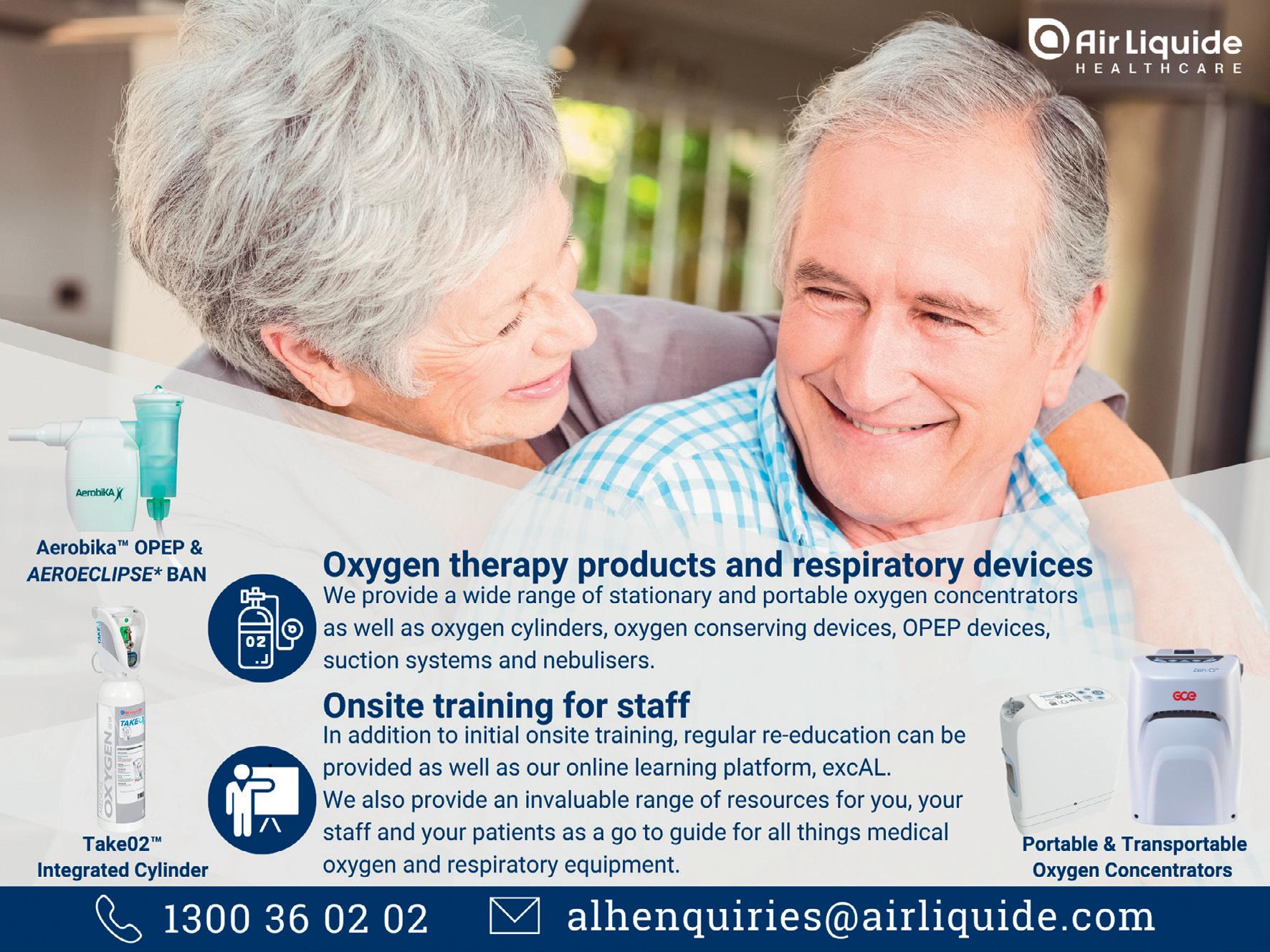
This technology using the Internet of Things (IoT) can reliably monitor and alert staff to an older person’s changed health status. Talius is sensor agnostic and can link any number of sensors autonomously collecting data into its platform. In this study there will be six different types of sensors with a total of 967 sensors installed throughout the home.
CEO of HSC Technology Group Graham Russell said the technology-using sensors have been trialled by CSIRO in people’s homes.
“Many aged care providers asked me if this technology could also be used in residential aged care homes as they saw how the data moved from a reactive to proactive solution,” Russell said.
“I am very pleased that we have won this grant and with the collective expertise of our partners, refine our approach. Using autonomous data collected through the sensors ensures dignity for older people — it is not invasive like a camera or CCTV, and can be very sensitive to help predict a change,” he said.
SMART SENSING MESSAGING SYSTEM
Whiddon’s Executive General Manager Technology and Property Regan Stathers said, “We are excited to introduce Talius, linking real-time information through a variety of the sensors into one dashboard and alerts to handheld devices.
“The Talius platform provides us with information that informs care and up-to-date information on the residents’ changing needs. This technology is like a smart sensor messaging system and we are eager to better understand the experience of our residents and staff using Talius,” he said.
Managing Director of Anchor Excellence Cynthia Payne said the organisation was delighted to be involved in this collaboration to help find solutions to the serious impact of falls.
“As part of this research program, we will be working with the clinical team to identify high-impact, high-prevalence risks for each resident and ways the Talius platform can send out alerts and prompts that support the team with their care,” Payne said.
“This is an area of great need in the sector and the ARIIA grant is enabling this innovation to take the next step towards implementation. We are looking forward to seeing the results and how this can support innovation across the sector,” she said. n
MAY 2023 - AGED HEALTH 23 www.agedhealth.com.au
With over 16% of Australians aged 65 and over, Australia is an aging population. Mainly due to declining mortality, this double-edged sword means both the positive of a higher life expectancy for the average Australian and the consequence of age-related health conditions and reliance on services such as home care and residential aged care.
Aged care providers are beginning to recognise the need for products and services that more closely meet their customers’ needs and, importantly, their wants.
For those needing care on the earlier side of the spectrum at 65, it could mean 20 to 30 years living in an aged care residence. This adds even more weight to the responsibility of providers, not just regarding care, but quality of life and the experience of a homeaway-from-home.
Gone are the days of hospital-style aged care residences, with providers such as TriCare exploring more person-centred facilities and redesigning the aged care experience. TriCare has championed this trend for many years, and you can see this paramount in the most recent build, TriCare Williams Landing.
“Our residents were front of mind throughout the entire design process, from selecting the location and site at the very beginning, all the way through to the artwork hung on the walls,” explains TriCare Property & Planning Manager, Simon Dwyer.
“Person-centred design principals are key to the happiness and wellbeing of our residents
THE AGED CARE EXPERIENCE
— accessibility, adaptability, creativity, comfort.”
And looking at TriCare Williams Landing, it’s evident that residents will thrive in their new home. Floor-to-ceiling windows yield natural light-filled spaces, proven to improve cognition and mood. An unpretentious layout and wide halls and entries facilitate mobility and assist navigation for those with cognitive impairments. Plentiful communal areas encourage social interaction, and amenities such as the beauty salon promote independent activities for residents.
Wellbeing objectives have driven all TriCare’s residential aged care built in the last decade, with each new facility capitalising on the location of the residence and bringing the outside in.
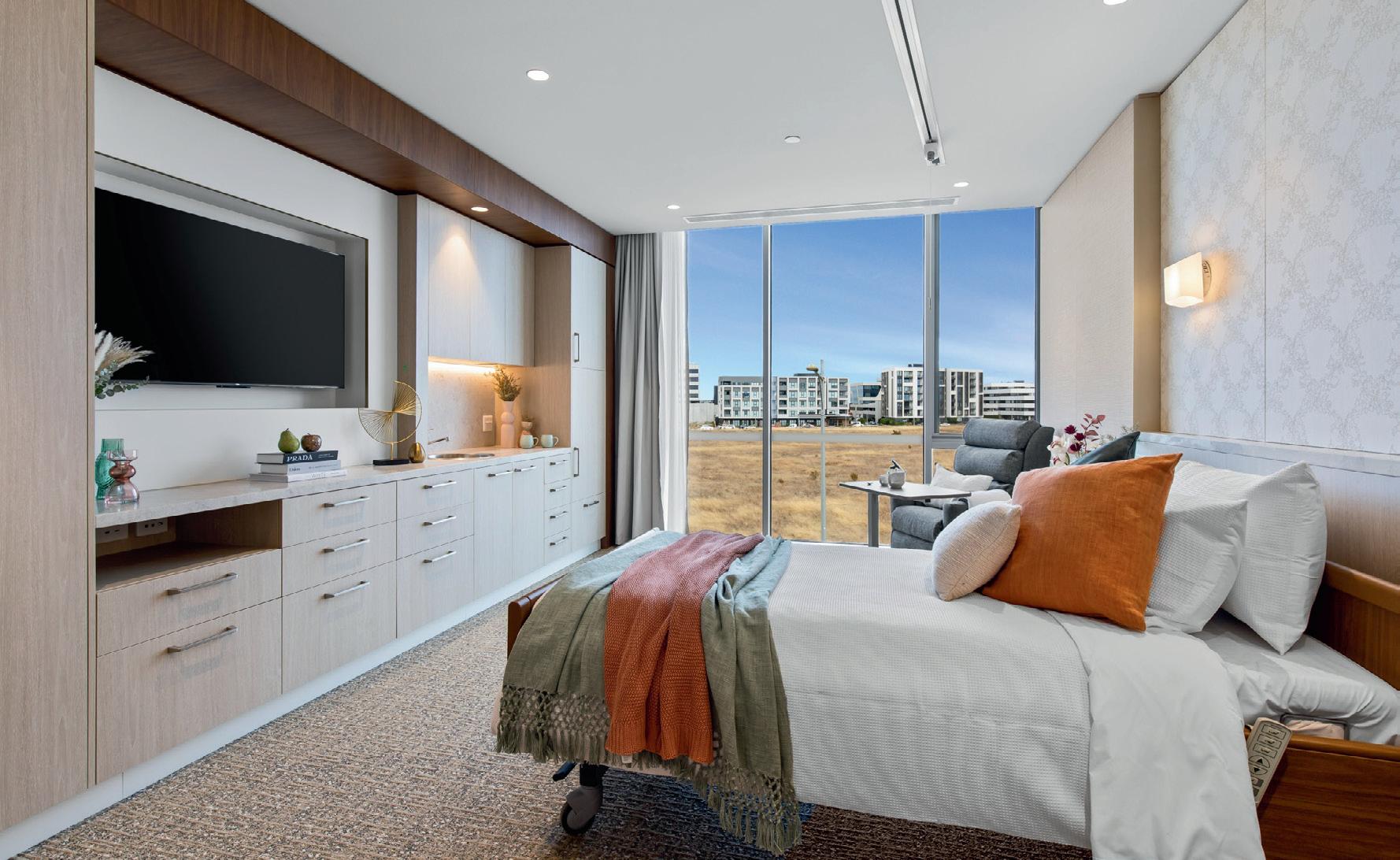
“One of our primary considerations is how we can connect residents to the community and their natural surroundings. While residents have opportunities for outings, the Covid-19 pandemic was a reminder that access to space and amenities is essential to resident wellbeing,” says Simon.
In addition to a planted conservatory central to the layout and ample safe places to feel the sun or a breeze, TriCare Williams Landing is located adjacent to a protected nature reserve. This means residents will have undisrupted views of this reserve, in addition to views of Melbourne City and Altona Bay for many years to come.
The final touch? Subtle but significant interior design choices. TriCare balances hygiene with
homely, utilising accents like cushions and books to create a homely over clinical feel. Pops of mustard, rust, sage, and seafoam awaken emotional responses and promote cheerful moods, while colour contrasts between floors and walls help with visibility. TriCare’s interior design process goes far beyond what looks appealing.
“What looks good must be balanced with what is functional, and not just functional for anyone, what is functional for our residents.”
This can be seen in long wide cupboard handles for those with reduced manual agility and in the curtains that can be pulled across by hand rather than blinds with cords or pulleys. Selected finishes in matte to reduce glare which can be diffi cult for senior eyes and certain eye conditions.
And just as TriCare’s design process has been developed over their last 54 years of operation, they are adamant it will continue to be refined in every new build.
“Our residents and their families’ needs and expectations change over time, and that’s where our design eyes are continuously focused,” explains Simon.
24 AGED HEALTH - MAY 2023 www.agedhealth.com.au SPONSORED CONTENT TriCare www.tricare.com.au REDESIGNING
NO
SILVER
BULLET

TO STAFF CRISIS
It’s no secret — filling aged care vacancies is the biggest challenge in aged care not just nationally, but globally. Attracting and retaining sufficient staff with the right skills mix is essential to providing quality care but can be difficult to achieve. There is intense competition for workers across the care sector. Registered nurses were the most in-demand occupation in Australia in the final quarter of 2022, and aged and disabled carers were the third most in-demand role over the same timeframe.1
The move to 24/7 nursing, as a result of the recent Royal Commission, is a high-value integrity measure, but it is a measure that for some is proving a tough ask.
I would like to acknowledge the federal government for navigating the Royal Commission’s findings and taking a stance in recognising the significant contribution of the aged care workforce. I believe nurses and those in the caring professions are as important as teachers, doctors and firefighters. They should receive a higher proportion of the nation’s GDP for the contributions they make to society.
The recently announced Aged Care Industry Labour Agreement, including an expedited two-year pathway to permanent residency for migrants, should make it easier for providers to recruit desperately needed staff from overseas and raise the bar on providing clinical support in residential settings.
While our sector has been under unprecedented pressure for some time due to the pressures of reform, the global pandemic and reduced migration, there are resources available for providers who are looking to improve their employee value proposition and reduce their staff turnover risk.
Both the Aged Care Workforce Industry Council (ACWIC) and the Department of Health and Aged Care have resources available on their websites as a starting point.
ACWIC’s free Workforce Planning Tool was developed with and for the aged care sector
MAY 2023 - AGED HEALTH 25 www.agedhealth.com.au
GRAEME PRIOR*
>>
iStock.com/scanrail
and can be used by residential and in-home care providers. It assists them to understand the current state of their workforce and create a strategic workforce plan so they can effectively build their staffing models to provide holistic, human-centred and quality care. Workforce planning is critical to ensuring older people continue to receive a high standard of care, and that the wellbeing of workers remains a priority.
The Department is offering retention payments for aged care registered nurses and COVID-19 leave payments for those with no personal leave entitlements. I encourage providers to apply for these payments (as appropriate) and pass them on to eligible staff members. Infection prevention and control training grants of over $13,000 are available for registered nurses.
Additionally, there are many actions providers can take to move the dial.
For instance, consider what makes you a good employer. Develop your employee value proposition (EVP) and ensure current and potential employees know about it.
Part of your EVP may be offering aboveaward wages, or at a minimum, pledging to pass on the 15% pay rise recently awarded by the Fair Work Commission to direct care, head chef and lifestyle/recreation staff. While we know many aged care workers love the nonfinancial rewards of their job, ACWIC continues to advocate for increased wages for all aged care workers, to recognise the essential and increasingly challenging nature of their roles.
Consider focusing on the other benefits employees are likely to value, such as maximising the time staff have to forge positive bonds and work with older people. Workers want to feel they are making a real contribution to older people’s lives.
Focusing on employee experience is vital to the success of your HR strategy. 2 If your organisation isn’t offering a quality induction process for new hires, mentoring, flexible rosters, adequate shifts or opportunities for training and career progression, it’s likely your employees will consider looking elsewhere.

Explore high-quality traineeships and student placements. Offer promising students roles before they graduate. Take the time to understand and support their career aspirations.
Make use of the Work Bonus initiative and hire older people who can earn up to $11,8003 before it impacts on their pension.
Training supportive supervisors is another opportunity. Those managers are your workers’ key source of information about your organisation and are crucial to championing your culture and values.4
Leading providers already have many of these practices in place and are now reaping the benefits.
This is only the beginning of a tectonic shift in Australian society as our population ages. It’s a shift that requires a big-hearted country to tackle the looming challenges of that aging population so we can care for them as much as they cared for us.
There’s no silver bullet to solve the labour shortage the sector, and the nation more broadly, is experiencing. We must all continue with the great work and recognise that there is so much more to be done. n
*Graeme Prior is the CEO of Hall & Prior Aged Care, Deputy Chair of ACWIC and President of the International Federation on Ageing. Founded in 1992 with a single, family-owned nursing home, under Graeme’s leadership Hall & Prior has expanded to include 25 ‘centres for healing’ across Australia offering care, amenities and programs, servicing 1600 aged care residents and employing 2100 permanent staff. Prior is passionate about improving the quality of aged care services through education, workforce enablement and the use of technology to implement evidence-based practice. His focus is on knowledge creation to ensure better evaluation, planning and delivery of care services.
1. https://www.jobsandskills.gov.au/reports/labour-market-update-december-2022
2. https://researchoutput.csu.edu.au/en/publications/the-role-of-leadership-inbuilding-facilitating-and-sustaining-a-
3. Until 31 December 2024. Bonus reverts to $7800 from 1 January 2024.
4. Isherwood, L., Mavromaras, K., Moskos, M. and Wei, Z, 2018, Attraction, Retention and Utilisation of the Aged Care Workforce: Working paper prepared for the Aged Care Workforce Strategy Taskforce, University of Adelaide, RCD.9999.0176.0001. pdf (royalcommission.gov.au)
26 AGED HEALTH - MAY 2023 www.agedhealth.com.au
IF YOUR ORGANISATION ISN’T OFFERING A QUALITY INDUCTION PROCESS FOR NEW HIRES, MENTORING, FLEXIBLE ROSTERS, ADEQUATE SHIFTS OR OPPORTUNITIES FOR TRAINING AND CAREER PROGRESSION, IT’S LIKELY YOUR EMPLOYEES WILL CONSIDER LOOKING ELSEWHERE.
iStockphoto.com/vchal
NEW BRANDING, SAME GREAT SERVICE FOR FOOD TRAINING PROVIDER CFT

This month heralds an exciting new milestone in the more than quarter-century history of CFT International. Over the past 25+ years we have built up an enviable reputation as one of the leading providers of food safety training and RSA certification.
In keeping with CFT’s ongoing dedication to providing our customers with the high quality that they’ve come to expect, we’re proud to announce that CFT’s online home has moved to the new address of www.cft.edu.au.
Only accredited Registered Training Organisations can apply to use an edu.au web address, so our new URL underscores our commitment to delivering top notch services, utilising the best trainers and assessors available.

To celebrate the change we’ve also taken the opportunity to unveil a new logo for the CFT brand, and a new website. The new logo maintains continuity with the CFT branding
that long time customers and students have come to know and trust while introducing a bold new look designed to resonate in the contemporary marketplace.
In the midst of all this innovation, one thing that hasn’t changed is CFT itself. We are still the same trusted service provider under the same Australian ownership that we have always been, with the same staff and same commitment to quality you’ve come to expect from us.
I invite you to visit our new website at www. cft.edu.au, which has been redesigned to be easier to navigate and find all the information you need on our services, and features a more contemporary presentation style.
Our former address of www.cft.com.au will automatically redirect to the new site for the time being, until everyone is familiar with where to find us in the future.
CFT remains as dedicated as ever to providing the very best in quality food safety training and RSA certification. We appreciate your ongoing support and are pleased to invite you to share this next stage of our journey, as we reaffi rm our commitment to our customers and students across Australia and internationally.

MAY 2023 - AGED HEALTH 27 www.agedhealth.com.au SPONSORED CONTENT CFT International Pty Ltd www.cft.edu.au
iStock.com/STEEX
DESIGN MATTERS THE GREEN HOUSE MODEL OF CARE IS HERE
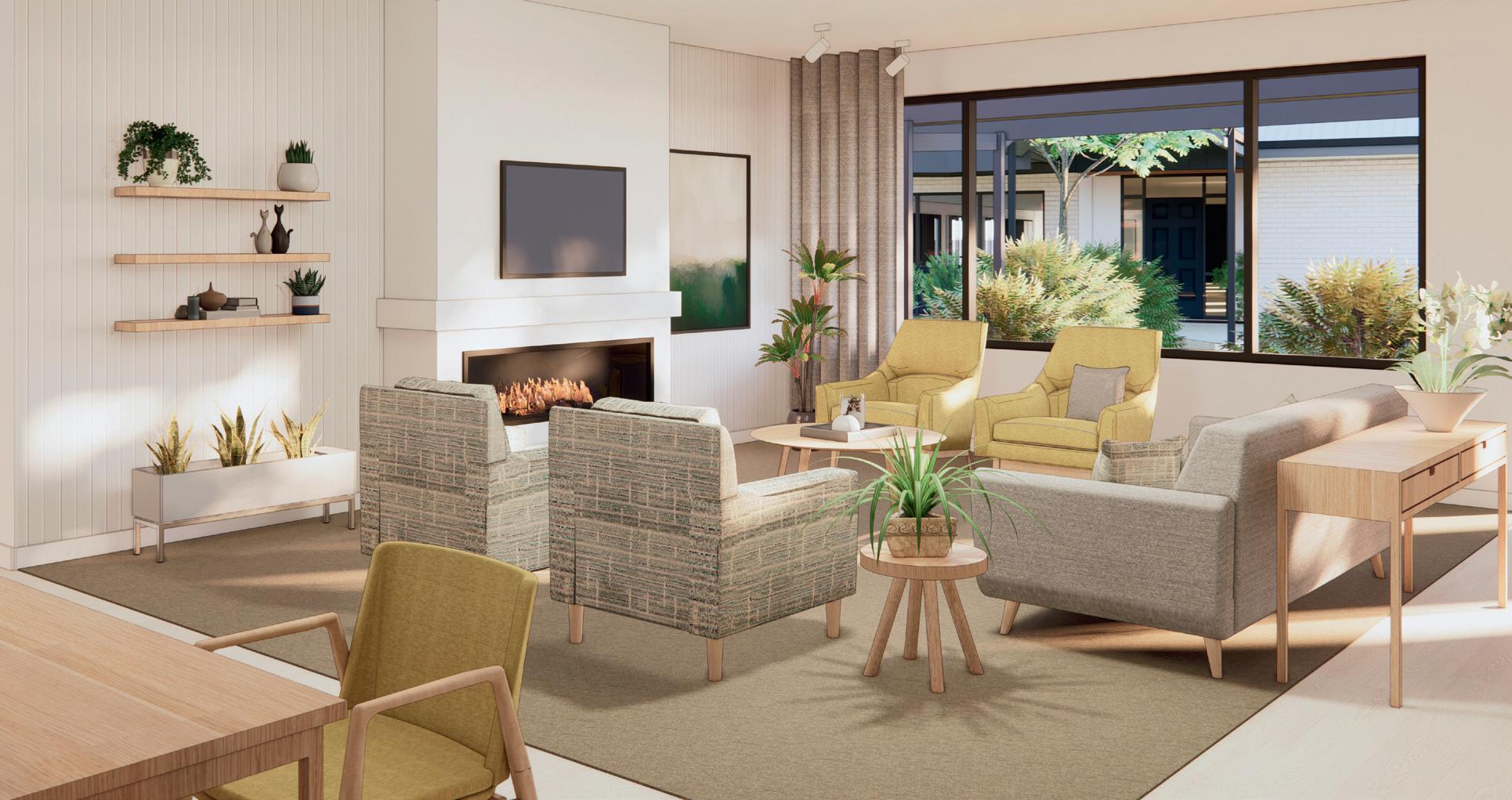

Credit: Brown Falconer.
28 AGED HEALTH - MAY 2023 www.agedhealth.com.au
MAKING THE SMALL BIG A render of the open plan living.
Healthia, ACH Group’s new residential care home, set to open in August 2023, will implement the US-founded Green House Project (GHP) model of care, which promotes the autonomy and individuality of residents and staff.
Owned and overseen by the US-based Center for Innovation, the GHP model has been successfully implemented in nearly 400 private and not-for-profit care homes in the United States.<br>Healthia comprises eight purpose-built single storey homes, located in a village setting and joined via interconnected walkways. The homes are designed to integrate with the natural streetscape of a typical suburban neighbourhood through their scale, domestic features, and materiality.
The facility has been built by SARAH Constructions, with Brown Falconer as the architect.
THE CULTURE SHIFT
Each home features 12 individual bedrooms all with their own ensuite bathroom. Bedrooms also have direct access to outdoors and landscaped gardens, to promote greater independence and freedom of movement.
Informed by person-directed care principles, the new care model is said to maximise the independence of residents, empowers staff, and enhances the benefits of the highly regarded small household design that Healthia has adopted.
South Australian provider ACH Group’s CEO Frank Weits said the organisation was drawn to GHP because of the opportunity to accelerate the culture shift to person-directed care within its workforce at Healthia and the benefits to be experienced by residents and staff.
“We have recently implemented a new operating model to provide increased role clarity and accountability while standardising the workforce model in our care homes. Having implemented the new model, the next priority for us is to move workforce culture to person-directed care,” he said.
“There is an increasing urgency and growing expectation for change in the aged care sector — driven by residents, customers, the workforce and regulators alike — to move to a model of care where the priority is the older person’s preferences and staff skills are developed and nurtured. The Green House Project delivers this,” Weits said.
THE SMALL HOUSEHOLD MODEL
Center for Innovation CEO Susan Ryan said, “Introducing the Green House Project model of care at Healthia — the first ever home outside of the United States to implement the model — is such a significant milestone for our organisation, and we’re so pleased that ACH Group is the local operating partner that will make it happen.”
Healthia has adopted the small household model, with homes each featuring a single long table to promote greater interaction and sense of belonging between residents and staff. The environment is small and domestic rather than large and institutional, Ryan said.
The Central Building at the facility has a publicly accessible cafe and hair salon that residents will also use. It aims to create an ‘outing’ for residents that keeps it away from their homes and gives them choice to visit or not, just like people outside Healthia would experience. It also seeks to normalise the residential care environment by having visitors come and go more regularly.
DESIGN PRINCIPLES
ACH Group General Manager of Property Ben Ward said, “Many design principles within the houses at Healthia have taken into consideration what would be seen in someone’s own home. For example, each home has its own entry door so residents feel secure, and visitors can be greeted into the home. We have also minimised institutional artefacts such as signage, nurse stations and medication trolleys. The homes also have domestic washers and dryers so if residents want to continue to do their own laundry, they can.
“There was a requirement for the houses to achieve high levels of natural light and natural ventilation, which are principles of good dementia design and promote sustainability. This has been achieved through the placement of large glass windows and doors featuring views and access to landscaped gardens. Via the interconnected walkways, residents can move around the gardens and enjoy the outdoors in a safe and secure environment.”
The University of South Australia will co-locate at the new facility with a general practice and student-led allied health clinic open to the public on a full-time basis on weekdays. In addition, students will undertake a placement in the residential care home. n
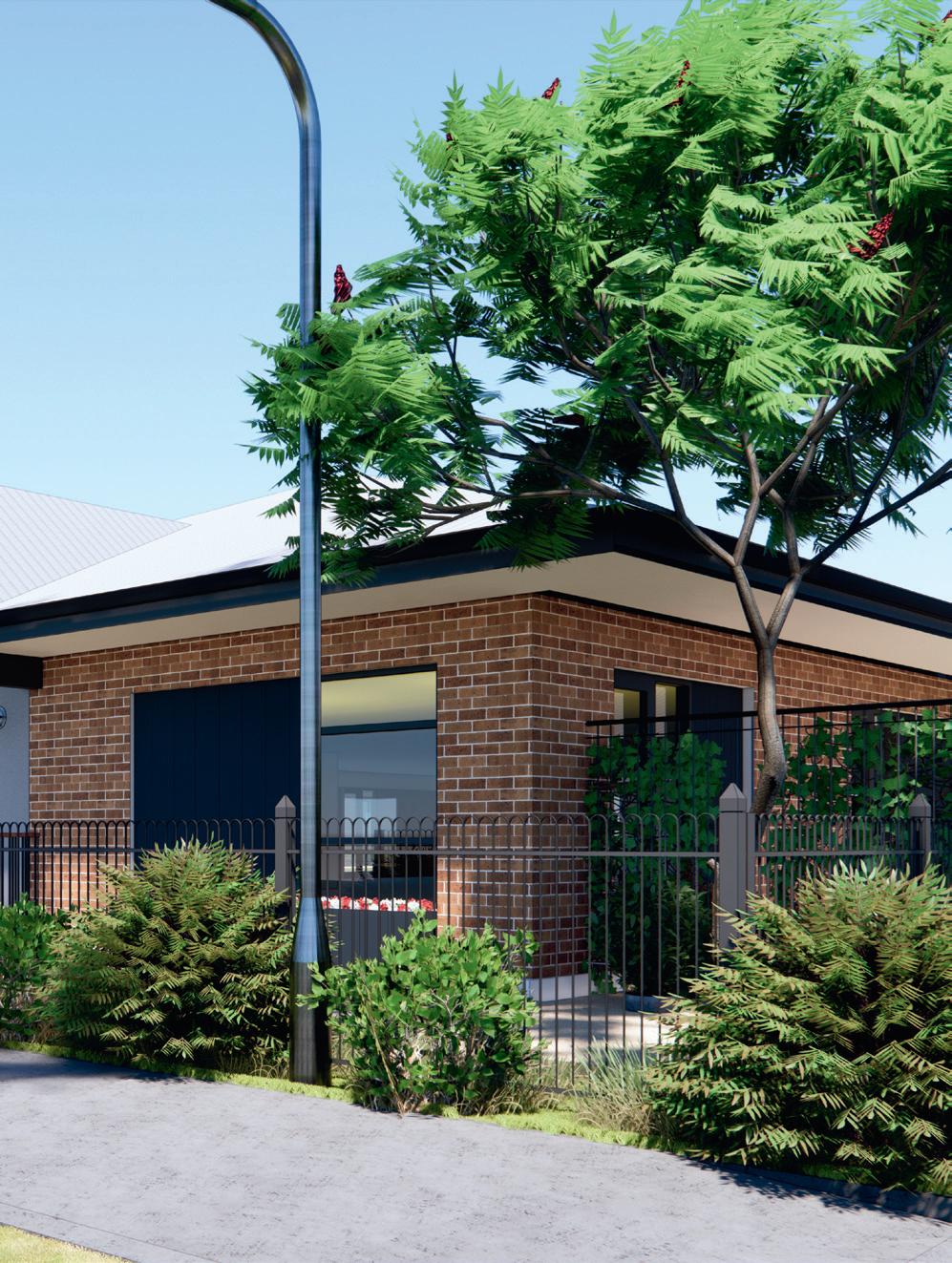
MAY 2023 - AGED HEALTH 29 www.agedhealth.com.au
A render of the exterior of one of the eight houses.
Credit: Brown Falconer
CONTACTLESS SCREENING TOOL FOR HARD-TO-HEAL WOUNDS
Athermal-imaging tool to screen for chronic wounds could enable nurses to identify these hardto-heal sores during the first assessment at a person’s home.
Nearly half a million Australians live with chronic wounds, which greatly affect their quality of life and cost the nation’s health system around $3 billion each year.

The latest innovation by researchers at RMIT University and Bolton Clarke Research Institute builds on their team’s work, which enabled the identification of chronic leg sores by the second week after the baseline assessment.
Their latest published results allow the identification of these wounds a week earlier and represent a significant leap forward, the team said.
Lead researcher Professor Dinesh Kumar said their latest clinical study, published in the Nature journal Scientific Reports, presents an AI-powered system to predict how leg ulcers will heal based on thermal images from the first assessment.
Kumar, from RMIT’s School of Engineering, said that the research means that specialised treatment for slow-healing leg ulcers can begin up to four weeks earlier than the current gold standard.
Co-researcher Dr Quoc Cuong Ngo from RMIT said while thermal imaging had previously been considered for detecting chronic wounds, the team’s methods enabled significantly earlier detection than other approaches.
“Our innovation is not sensitive to changes in ambient temperature and light, so it is effective for nurses to use during their regular visits to people’s homes," he said.
“It is also effective in tropical environments, not just here in Melbourne.”
The new method provides information on spatial heat distribution in a wound and predicts, with 78% accuracy, whether leg ulcers would heal in 12 weeks without specialised treatment.
Wounds change significantly over the healing trajectory — higher temperatures signal potential inflammation or infection, while lower temperatures can indicate a slower healing rate due to decreased oxygen in the region.
The research was based on thermal images collected from 56 clients with venous leg ulcers. This type of ulcer is the most common chronic wound in Australia.
The current gold-standard approach requires taking tracings of the wound size after four weeks, involving physical contact with the wound, which delays identification of slow-healing wounds.
Bolton Clarke Research Institute Senior Research Fellow Dr Rajna Ogrin said the non-contact method reduces infection risk by minimising physical contact.
“This method provides a quick, objective, non-invasive way to determine the wound-healing potential of chronic leg wounds that can be used by healthcare providers, irrespective of the setting.
Kumar said, now that the method has been successfully demonstrated in controlled trials with partner clinicians, the next step is to adapt it for a busy nurse or doctor to have this thermal imaging and rapid assessment capability on their mobile phones.
“With the funding we have received from the Medical Research Future Fund, we are now working towards that,” he said.
“We are keen to work with prospective partners with different expertise to help us achieve this goal within the next few years.”
The team will also assess whether their method can predict healing of diabetes-related foot ulcers. Untreated chronic wounds in people living with diabetes are the leading cause of limb amputation in Western countries. n
30 AGED HEALTH - MAY 2023 www.agedhealth.com.au
iStock.com/SDI Productions




USING ELECTRICITY TO SPEED UP WOUND HEALING
International researchers have developed a new method that claims to make wounds heal three times faster.
RChronic wounds are a major health problem for diabetic patients and the elderly — in extreme cases they can even lead to amputation. Now, researchers from Chalmers University of Technology, Sweden, and the University of Freiburg, Germany, have developed a new method using electric stimulation to speed up the healing process.
The researchers worked from an old hypothesis that electric stimulation of damaged skin can be used to heal wounds. The idea is that skin cells are electrostactic, which means that they directionally ‘migrate’ in electric fields. This means that if an electric field is placed in a petri dish with skin cells, the cells stop moving randomly and start moving in the same direction.
The researchers investigated how this principle can be used to electrically guide the cells in order to make wounds heal faster. Using a tiny engineered chip, the researchers were able to compare wound healing in artificial skin, stimulating one wound with electricity and letting one heal without electricity. The differences were striking.

“We were able to show that the old hypothesis about electric stimulation can be used to make wounds heal significantly faster. In order to study exactly how this works for wounds, we developed a kind of biochip on which we cultured skin cells, which we then made tiny wounds in. Then we stimulated one wound with an electric field, which clearly led to it healing three times as fast as the wound that healed without electric stimulation,” Asplund said.
In the study, the researchers also focused on wound healing in connection with diabetes, a growing health problem worldwide. One in 11 adults today has some form of diabetes, according to the World Health Organization (WHO) and the International Diabetes Federation.
“We’ve looked at diabetes models of wounds and investigated whether our method could be effective even in those cases. We saw that when we mimic diabetes in the cells, the wounds on the chip heal very slowly. However, with electric stimulation we can increase the speed of healing so that the diabetes-affected cells almost correspond to healthy skin cells,” Asplund said.
The Chalmers researchers recently received a large grant which will allow them to continue their research in the field, and in the long run enable the development of wound-healing products for consumers on the market.
“We are now looking at how different skin cells interact during stimulation, to take a step closer to a realistic wound. We want to develop a concept to be able to ‘scan’ wounds and adapt the stimulation based on the individual wound. We are convinced that this is the key to effectively helping individuals with slow-healing wounds in the future,” Asplund said.
The study has been published in the journal Lab on a Chip. n
32 AGED HEALTH - MAY 2023 www.agedhealth.com.au
Photographer:
Illustration: Science Brush Hassan
A. Tahini

Skin dressing
Frequent dressing changes are a routine practice in wound care. However, each day, injuries are caused through the traumatic removal of traditional dressings, causing unnecessary pain, increased risk of infection and higher management costs.

Skin tears are among the most common wounds among elderly patients. Fragile, aging and compromised skin has special needs when it comes to dressings.
Leukoplast skin sensitive technology uses a soft silicone adhesive and offers gentle and secure wound care solutions for highly sensitive or compromised skin, while providing an atraumatic and almost pain-free removal. The Leukoplast skin sensitive family of dressings offer a strong grip and gentle removal and can also help protect fragile skin, while avoiding unnecessary wounds and inflated costs due to increased treatment times and materials.
Leukoplast Skin Sensitive Dressings are supplied by Essity.



Essity
www.medical.essity.com.au
Wound care solution
Sentry Medical’s Senturian Skin Tear Pack is an allin-one sterilised wound care solution designed to aid in rapid assessment and treatment of skin tears among aged care residents. It contains easy-to-follow instructions to enable non-regulated workers to promptly attend to wounds, classify their severity and record treatment outcomes for later review by a nurse.
The Senturian Skin Tear Pack’s effectiveness on resident skin tear wound recovery was the subject of a four-month independent clinical study across four related Australian aged care sites in 2021. The study was a random controlled trial that was overseen by Healthcare United and RMIT University, using a nurse practitioner who specialises in wound management.
The study found that the Senturian Skin Tear Pack — First Response: reduced average healing time for Type 3 skin tears from 50.9 days to 9.8 days; healed Type 1 tears 13.04 days faster, and Type 2 tears 26.8 days faster; reduced facility treatment costs from an estimated $20,037 to $2366 over a two-month period; and reduced average dressing changes for Type 3 tears from 17 days to just four days.
The Sentry Medical Senturian Skin Tear Pack is endorsed by the International Skin Tear Advisory Panel.
Sentry Medical
www.sentrymedical.com.au
34 AGED HEALTH - MAY 2023 www.agedhealth.com.au
Dressing packs
Multigate SmartTab Dressing Packs have been assessed by ANTT as supporting effective Aseptic Non Touch Technique (ANTT), and are also climate neutral. The dressing packs are designed to ensure Key Parts and Key Sites are protected in any procedure: the pack folding supports a safe and efficient opening; two-colour system clearly denotes sterile surfaces; and tabs provide a simple and effective way to open and position the aseptic field.

By measuring the life cycle greenhouse gas emissions associated with these dressing packs and offsetting the corresponding amount of greenhouse gas emissions, Multigate has made these packs climate neutral. This offset has been verified by South Pole.
MULTIGATE Medical Products



www.multigate.com.au
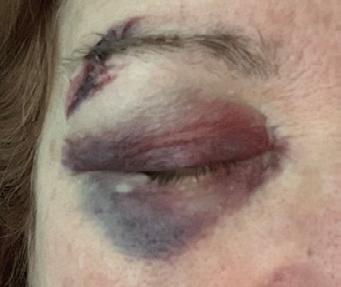
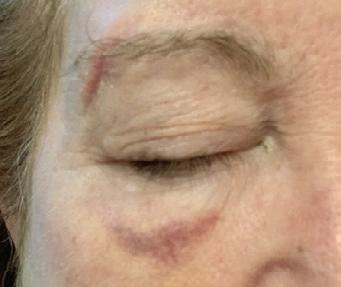
MAY 2023 - AGED HEALTH 35 www.agedhealth.com.au
THE INCONTINENCE TABOO
For an issue that affects a staggering one in three Australians — particularly the elderly — it’s surprising that so little is said about incontinence within the care industry.

According to the ABS, one in every 14 people over 65 (7.2%) and one in four people over the age of 85 (24.5%) experienced severe incontinence, as of 2009. Although these numbers are somewhat dated, they still indicate the significant impact incontinence must have on both the industry and the lives of those affected.
Despite its prevalence, incontinence remains a taboo subject. Many people are pushed into silence through embarrassment and shame, and the lack of public discussion and awareness only exacerbates the problem.
THE MENTAL IMPACT OF INCONTINENCE
According to a survey by the Continence Foundation of Australia, 32% of people believe incontinence affected their mental wellbeing. Many people isolate themselves, even from family. The fear of leakage and odour can make them a recluse and have a negative impact on their mental health.
Incontinence is something people live with, and it shouldn’t stop them from doing the things they love. Incontinence should not signal the end of social outings or even travelling, and if it does, they could risk putting both their mental and physical health at risk.
I have personally heard elderly people say they feel like babies because they can’t control themselves, and express feelings of shame and confusion. They feel they have no one to talk to and as they mistakenly believe this is a ‘normal part of aging’, they often fail to seek professional help.
NOT A NORMAL PART OF AGING
In fact, incontinence is not a normal part of aging, and shouldn’t be treated as such — either by the sufferers themselves or by their care provider. While it is more common among the elderly, it is not a given and should not be automatically considered normal.
Another common misconception is that there is nothing that can be done about being incontinent. But the reality is that 75% of incontinence can be cured or better managed.
There are many treatments available, depending on the type of incontinence one has. Pelvic floor training or physio is usually the starting point, and it’s important to seek the advice of a continence nurse or continence physiotherapist to get an initial diagnosis and follow-up treatment plan. Even if complete control of incontinence is not possible, management can greatly improve a person’s quality of life.
Care providers can also offer advice on making basic lifestyle and dietary changes that can help to improve or better manage incontinence. For example, reducing caffeine and alcohol intake, maintaining a healthy weight and practising pelvic floor exercises can all help to manage incontinence.
Carers can also provide practical assistance to those with incontinence, including helping with going to the toilet, providing access to continence products and ensuring that individuals are comfortable and well cared for.
OPENING THE CONVERSATION
The best way to tackle incontinence is simply to start the conversation. While incontinence is a delicate topic that many people don’t feel comfortable discussing, it is essential to break down the stigma and let people know that they are not alone.
With the right support and planning, individuals with incontinence can continue to enjoy their favourite activities and maintain their quality of life. In fact, there are many high-profile incontinent people who live or have lived with incontinence including: Kris
Goldberg.
36 AGED HEALTH - MAY 2023 www.agedhealth.com.au
Jenner, Samuel J Jackson, Stephen King, Katy Perry, Helena Bonham Carter, Tony Romo and Whoopi
SONYA MEYER*
When approaching the topic, it is essential to be sensitive and respectful. Use language that is clear and easy to understand, and avoid using stigmatising terms that may cause embarrassment or shame. By providing accurate information about the causes, treatment options and management strategies, care providers can help dispel the myths and encourage those affected to seek help.
It’s time to break the taboo surrounding incontinence for good. By providing the right education, resources and practical assistance to those affected, the care industry can help an untold number of Australians live happier, healthier and more fulfilling lives. n
*Sonya Meyer is a consultant with ConfidenceClub, a continence management company that delivers products straight to the customer’s door. Meyer has completed a Bachelor of Nursing and Graduate Diploma in Clinical Practice, and is passionate about empowering people living with incontinence issues.

MAY 2023 - AGED HEALTH 37 www.agedhealth.com.au
iStock.com/anilakkus
TRIAL TO IMPROVE QUALITY REPORTING
The Digital Health Cooperative Research Centre’s (DHCRC) is set to commence the next phase of its flagship Aged Care Data Compare project with large-scale provider Regis Aged Care (Regis) and software supplier AutumnCare to trial a prototype aged care quality indicator app.
The project, to be led out of The University of Queensland (UQ), aims to trial and evaluate the app’s effectiveness as a potential quality benchmarking and reporting solution for the residential aged care sector.
The initial Aged Care Data Compare project built the foundations for quality reporting measures with the development of a HL7 Fast Healthcare Interoperability Resources (HL7 FHIR) data exchange specification; validation of 25 recommended quality indicators; and the creation of a secure data and analytics platform.
The project was identified in the Royal Commission into Aged Care Quality and Safety as an exemplar of the type of innovation required to help reform the aged care sector.
Known as ACDC Plus, this phase of the project will test the HL7 FHIR in Regis aged care homes as part of its existing quality improvement program. UQ will use HL7 FHIR to extract data from Regis clinical information system in a safe, reliable and efficient way and to support the calculation of evidence-based quality indicators.
FHIR experts at CSIRO’s Australian e-Health Research Centre (AEHRC) will develop the software that can be integrated into the existing clinical workflow to support the capture of quality indicators and the reuse of information using standards such as SMART and FHIR.
AEHRC is one of Australia’s centres of excellence in the implementation of HL7 FHIR.
ACDC Plus will also trial the secure data and analytics platform (KeyPoint) — developed by the Centre for Health Services Research and collaborators (QCIF) and hosted by UQ — to seamlessly generate riskadjusted quality indicators and implement co-designed user dashboards that gives Regis’s care staff accurate information on the outcomes.
DHCRC CEO Annette Schmiede said the initiative comes at a critical juncture with Australia still lacking a truly transparent and consistent aged care quality benchmarking solution.
Regis CEO and Managing Director Dr Linda Mellors said there was an urgent need to lift the bar on quality and safety in aged care and to provide easily accessible data for the purposes of understanding the outcomes of care.
“This project uses contemporary digital standards to help care staff and providers capture and report the data required to generate quality indicators that are relevant and reliable. It will also help demonstrate the benefit of data standardisation and sharing in Australian residential aged care at a time when the sector lacks a national minimum dataset.”
The app will incorporate the department’s National Aged Care Mandatory Quality Indicator program (QI Program) quality indicators and additional indicators identified by carers as enhancing care delivery to residents.
ACDC Plus will complement and align with the department’s effort to build a robust quality framework for Australian residential aged care.
UQ chief investigator Professor Len Gray said,”This project will act as a springboard for provider-led initiatives around care quality and will have important synergies with government policy and practice.”
AutumnCare Executive Chair and Founder Stuart Hope said this was a significant project that has the potential to be a benefit for all in the aged care sector in Australia.
“The project partners expect the findings from ACDC Plus will demonstrate the technical feasibility of capturing and reporting care quality in real time along with the benefits that such timely reporting will have in transforming the visibility of the care provided in care homes across Australia,” Schmiede said. n

38 AGED HEALTH - MAY 2023 www.agedhealth.com.au
iStockphoto.com/MartinPrescott

A DAY IN THE LIFE ...

Supplied
Images:
CHARNEL SANDY-HAYES
A PASSION FOR COMPASSION
From an intensive care nurse to a high-care unit coordinator at Ryman Healthcare's retirement village in Wheelers Hill, Victoria, Charnel Sandy-Hayes has had a long and rewarding career caring for others. Here she tells us why she loves her job and what inspires her to keep giving.
When Charnel Sandy-Hayes started her journey in health care, her sole focus was intensive care nursing. She graduated with a BSc (Honours) in Nursing, followed by postgraduate studies in pharmacology in nursing and in intensive care nursing.
With a deep passion to help people, Charnel has worked as an intensive care nurse over 14 years across three continents. “For almost a decade I progressed as an afterhours hospital coordinator. I wanted to move into management; however, I knew there was more to learn from a management perspective and wanted to put my clinical background to good use.”
WHEN OPPORTUNITY KNOCKS
Little did she know, there something else was in store for her. Charnel was presented with an opportunity to work at Ryman Healthcare, a provider of retirement living and care in retirement village communities across Melbourne, Australia and New Zealand.
“A career in aged care wasn’t my original ambition; however, since starting with Ryman Healthcare, I know this is exactly where I’m meant to be,” she said.
“At Ryman, I have the support of a great management team to guide and support my professional development and I am very fortunate to manage the best team of people.”
A TYPICAL DAY
Reflecting on a typical day in her life as the Colombo Unit Coordinator at Weary Dunlop Retirement Village, Charnel said, “I wake up at 6 am, have a quick breakfast, feed our menagerie of animals and arrive at work by 6:45 am. I check my messages, review my calendar, and ensure adequate staffing for the day and upcoming week.
“At 7 am, we have a handover meeting to discuss any concerns and required follow-up for residents. I update care plans, oversee resident care and arrange external services and meetings with the ‘Multidisciplinary Team’ as needed. I check in with staff and attend daily education sessions and meetings to improve our services. I manage stock, conduct staff appraisals and ensure their education is up to date. Afternoon handover starts at 2:45 pm, and my shift ends at 3 pm, but I may check my phone for messages later due to the 24/7 setting.”
A CAREER IN COMPASSION
Aged care roles are demanding, and the sector is going through significant change and also battling negative community perceptions, but Charnel encourages those looking to join the sector to look past the challenges and focus on how having “a direct hand in improving someone’s life, helping them with their emotional, physical and mental health is key”.
“I strive to always lead by example, hoping that my spark of compassion will ignite the same compassion in the team that I lead. There will always be challenges and it is up to us to choose to rise to meet them and be the change that you want to see.”
The aged care industry has several paths depending on qualifications — from nursing to hospitality and catering, thus making it easy for people to find something that aligns, Charnel said.
“If your passion is caring for others, this is the industry for you,” she concluded. n
MAY 2023 - AGED HEALTH 41 www.agedhealth.com.au
THE POWER OF PETS
CONNECT. SEARCH AGEDHEALTH
PRINT / DIGITAL / MOBILE VISIT WWW.AGEDHEALTH.COM.AU
Editor: Mansi Gandhi ah@wfmedia.com.au
Editorial Assistant: Charlotte Newton
Acting Publishing Director/MD: Janice Williams
Art Director/Production Manager: Julie Wright
Art/Production: Linda Klobusiak, Marija Tutkovska
New research explores a practical model of hosting companion animals in aged care, including foster animals and personal pets, to help improve the mental health and wellbeing of thousands of residents. According to Pet Friendly Aged Care, only 18% of aged care facilities in Australia consider allowing residents to keep a pet, but UniSA researchers are calling for the federal government to change that.
UniSA researcher and project lead Dr Janette Young said the health benefits of human–animal relations, particularly for frail, older people in aged care, should not be underestimated.
“There’s no doubt that Australians love their pets. In fact, we have one of the highest rates of pet ownership in the world,” Young said.
“The great thing about pets is that they can help us feel happier and healthier. And they can do this in different ways: we take them on walks and play with them, so they help us stay active; we feed and care for them, so they give us purpose; but most importantly, they’re always there to give us unconditional love and companionship.
“But as we get older, pet ownership declines, and so too do these benefits. One of the most unrecognised issues of aging is touch deprivation. Pets are there to pat and cuddle and can make all the difference to someone when they’re feeling sad or down.
“Older people in residential care need and deserve a supportive, healthy environment. This is a moral imperative. Yet too often we’ve seen the system break under pressure.
“Our team has been working on ways that older people can maintain human–animal connections as they age, and one of the projects we’ve been investigating is cats living in residential care.

“The intention is that two adult cats would live among the residents in a dedicated wing of an aged care facility and be cared for by a select group of trained staff and volunteers.
“By living with the residents, the cats would help ease residents’ loneliness, as well as relieve stress, anxiety and depression. They’d be there to pat, to talk to, to care for and love, and to provide that special sense of companionship.”
The Royal Commission into Aged Care Quality and Safety found that the aged care industry was characterised by a lack of innovation and was not built around the people it was supposed to help.
Innovations such as UniSA’s ‘cats in aged care’ project can support the emotional needs of people in care. Young said that her project is currently seeking residential care partners to explore in-residence opportunities.
“We’re right on the precipice of making significant changes to aged care that could positively change the everyday lives of residents,” Young said.
“Already, we’ve established a tool that assesses any risks to humans and animals. So, we’re ahead of the game in terms of safety. But the next step is making it happen.
“Positive aging is not just about living a long life. It’s about aging well, enjoying your older years, and having purpose and comfort in your life. Pets can provide this.
“The issue now is funding. Many aged care facilities are keen to try new innovations but are limited by resources and funding. Staff turnover is also a significant barrier.
“We need the federal government to stand up to fund pets in aged care.
“Just like exercise facilities have become a core part of aged care facilities — and are proven to boost movement capabilities and wellbeing — so too should pets be considered an essential part of aged care. n
Circulation: Dianna Alberry, circulation@wfmedia.com.au
Copy Control: Mitchie Mullins copy@wfmedia.com.au
Advertising Manager: Kerrie Robinson +61 400 886 311 krobinson@wfmedia.com.au
Advertising Sales: Nikki Edwards +61 431 107 407 nedwards@wfmedia.com.au
PUBLISHED BY Westwick-Farrow Media
A.B.N. 22 152 305 336 www.wfmedia.com.au
Head Office Unit 7, 6-8 Byfield Street, North Ryde Locked Bag 2226 North Ryde BC NSW 1670 AUSTRALIA ph: +61 2 9168 2500
If you have any queries regarding our privacy policy please email privacy@wfmedia.com.au
Subscriptions for unregistered readersprice on application
Printed and bound by Dynamite Printing Print Post Approved PP100029283 ISSN 2653-4770
NOTICE: All material published in this magazine is published in good faith and every care is taken to accurately relay information provided to us. Readers are advised by the publishers to ensure that all necessary safety devices and precautions are installed and safe working procedures adopted before the use of any equipment found or purchased through the information we provide. Further, all performance criteria was provided by the representative company concerned and any dispute should be referred to them. Information indicating that products are made in Australia or New Zealand is supplied by the source company. Westwick-Farrow Pty Ltd does not quantify the amount of local content or the accuracy of the statement made by the source.
42 AGED HEALTH - MAY 2023 www.agedhealth.com.au
YEARS CELEBRATING
iStock.com/Anna Derzhina




























































 Eclipse 5
AirSep VisionAire 5
Eclipse 5
AirSep VisionAire 5

































































